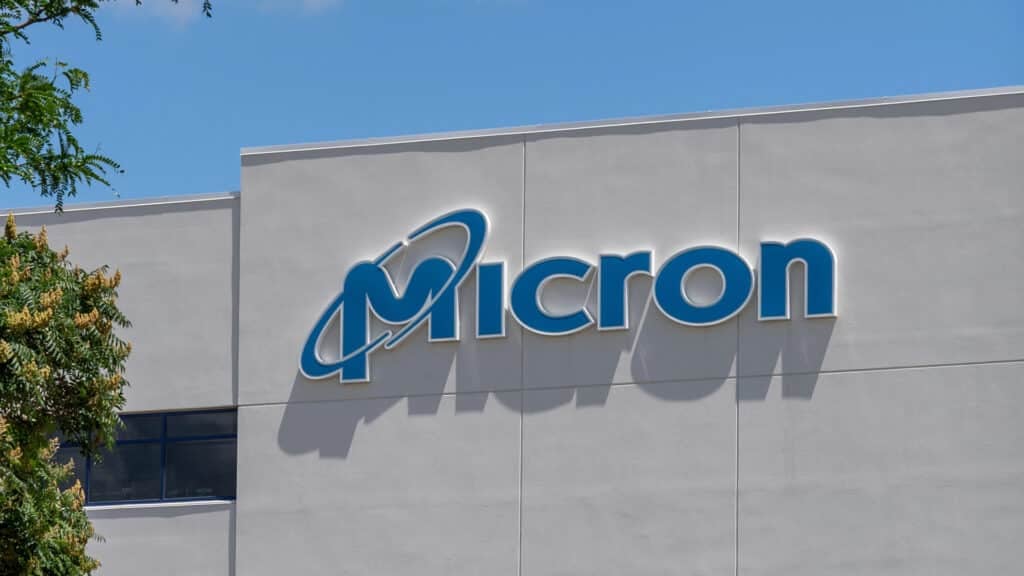The Six Five team discusses IBM’s announcement that Watsonx.ai and .data are “going GA.”
If you are interested in watching the full episode you can check it out here.
Disclaimer: The Six Five Webcast is for information and entertainment purposes only. Over the course of this webcast, we may talk about companies that are publicly traded and we may even reference that fact and their equity share price, but please do not take anything that we say as a recommendation about what you should do with your investment dollars. We are not investment advisors and we ask that you do not treat us as such.
Transcript:
Patrick Moorhead: So back in May, The Six Five, Dan and Pat, we went to IBM Think, and IBM made a ton of announcements about AI. By the way, over the last two months or three months, it isn’t necessarily unique. Everybody is making AI announcements primarily because of the impact that it has on the company’s valuation and stock market. So this has become a board to executive leadership team to everybody else. It’s very similar, by the way, I think, the same froth we saw when web first came out, e-commerce came out, mobile came out, what’s your mobile strategy? What’s your e-commerce strategy? We saw a ton of companies getting disrupted through e-commerce. So the boards wanted to know, “What is it?” Then, “Hey, now, what’s your generative AI strategy?” So the good news for IBM is they had been working on this a lot longer before the froth. In fact, they went GA on Vela, which was their training supercomputer cloud to be able to train these big models.
What IBM did announce was a service called watsonx, and there’s three elements to it. There’s the .ai and that’s to train validate, tune, deploy models. There’s the .data, which is essentially a data store for AI and then governance, .governance, which is to enable responsible, transparent, explainable data and AI workflows. To its credit, this week, it went freaking GA, general availability. So I did some digging. I got with IBM, I think we had two calls, 10 emails, 15 documents. What actually went GA, it’s not because, “Oh, gosh, I don’t trust IBM or, but Dan, pretty much everybody that we’re looking at, it’s not GA. In fact, there’s a very large vendor doing generative AI as a service that can’t even explain how they price. So what went GA, .ai and .data. You can swipe your credit card, multiple countries, multiple languages and six models running on the IBM cloud, which by the way, is full of 80 gig, A100 GPUs in very high performance clusters.
So one IBM model, it’s an NLP model, 150 million parameters, and you can fine tune the heck out of that thing. As interesting, more interesting to our audience, five hugging face models available GA. For QA, generate extract, some classify up to 20 billion parameters, and you can do inference on all these models. So what? Why is this even part of the show? We rarely do GA. Again, I’m unaware of any other enterprise-grade service for large language models, any large models, even if they’re not language that is GA today. So props to IBM, and it just shows A, how ready they were for this, did not catch them by surprise, and how quite frankly ahead they are of even every hyperscaler. I’m not aware of that any service that’s GA that supports, Bedrock’s not, Google’s not, Azure’s not. I don’t think that Oracle is as well.
Daniel Newman: Yeah, the onslaught of GA will come. I think in an era where there’s a lot of nervousness about data and where data resides the enterprise graph, how that data gets intertwined with the large language models, how that data then gets used, trust is a really important currency in this particular arms race to compete. I think we’ve seen, and Pat, I remember seeing your tweet or LinkedIn post about your declining utilization of generative tools already. I don’t think you’re alone. I think data is pointing to the fact that people have a little early fatigue. They’re almost as bored maybe as they are with Meta Threads after a week. I thought that one would get you. Okay. Anyway, but it’s not so much that they’re bored, it’s just that the use cases of trying what … In a lot of ways the LLM, the new chatbots are basically the next wave of search. It’s a new way to organize and distribute what’s old is new again. Remember Cliff Notes? “Hello, welcome to-
Patrick Moorhead: Very much so.
Daniel Newman: “Welcome to what…” So this is an instance of what’s old is new again. Google originally did its thing to organize all the world’s information, and now we’re organizing it and giving Cliff Notes to people because you could argue people want to be more efficient or we’re just so lazy that we don’t want to actually have to click the links to figure out what information is good. I think it’s hopefully about being more productive. But for companies, and they’re the ultimate of consumers of technology, it’s about the technology being able to make them more efficient, productive, offering better user experiences, CXs, innovations and you can’t do that without your data as part of The Graph. You can’t do it without the enterprise’s data. So just having that open internet data is not really a competitive advantage. In fact, it’s already proven to be a commodity.
So in order to make it a enterprise success story, you need to be able to A, make the data easily digestible and ingestible; B, give tools that enable enterprises to use that data but protect it from the public internet domain; C, you need to be able to govern it so that the outputs can be trusted or secure, are accurate, are constantly learning, training, and evolving. IBM what’s really interesting is, IBM has no interest, not any, not really one iota of interest in being a consumer product here. They’re not building something to try to get high adoption among broad internet users, consumers, mobile apps. They’re trying to basically say, “Look, we are 100% committed to building a sandbox, a tool set, a data lake, and a governing platform that enables companies to successfully implement enterprise AI on a business-wide scale to add value for the internal and external resources of the company.
So going GA was one thing, Pat, but actually building with that set of guided principles makes them very interesting for this particular space. Now I’ve been impressed with Vertex, I’ve been impressed with some of the things that OpenAI is doing. I think AWS is being heavily underrated right now for what they’re going to be able to do. But I do think IBM has been very declarative, clear, concise, and by the way, early. ‘Cause it’s not just about being early about being GA, they’ve been very early about the proclamation of AI hybrid cloud and the enterprise and their commitment to basically building tools that are able to be run in those environments successfully. That has also been a big part of their recent ascent into profitability, into growth, into scale. Now is this going to be the catalyst of IBM breaking away from mid-single digits and single-digit growth into doubles and beyond? It could be, but it is the most compelling thing-
Patrick Moorhead: If it’s not this, what is it going to be? It could be Red Hat, right?
Daniel Newman: I like Red Hat a lot. By the way, Red Hat’s a big part of this story, is the ability to do hybrid-enabled enterprise AI, so I like it. I’m happy to see it go GA. I’m really eager to start to hear some of these customer stories come to life, hearing how customers are using this to speed up and amplify and successfully deploy enterprise AI.
Patrick Moorhead: It’s funny, we went crazy when Microsoft was first and went GA. We both went crazy about them. We gave them a ton of credit with the caveat that, “Hey.” I see this as the same thing. I see IBM right now in the leadership role for enterprise generative AI. Right now, it could change because they’re fricking GA. That’s a huge deal. It’s a huge deal.
Daniel Newman: It is a huge deal. It is a huge deal. Obviously, hopefully, you can hear my enthusiasm. I’m cautious because I do think you’re going to have an onslaught of GAs in the near future.
Patrick Moorhead: Listen, and based on the markets that IBM is only targeted at, I think IBM’s going to have success in regulated industries, large enterprise. Okay? That is a sub-variant of the pie. Where these other folks, just like as a service, who’s going to have a bigger as a service Dell and… Sorry, as a service on-prem business, Dell or HP or HPE? It’s going to be Dell. Why? Server storage, networking, security and PCs. It’s an inevitability, but they’re behind, so the way that I look at it.
Daniel Newman: So it’s a similar parallel. Like I said, I’m actually very bullish. I just think it’s going to be interesting to see how fast this gets deployed and how quickly these customer use cases come. I think you made a great point about the regulated industries, but I’m actually very, very impressed. I think the governance is being the underrated thing. I think, and I said this, that some of the public concerns about some of the big public cloud LLM technologies should really play to IBM’s favor. They should be able to use this and create some momentum in a way, of course, they have partnerships with all those players, but in a way that says, “Hey, we really have narrowed it in, built it in and squared our entire presence around being governed, managed, secure. Your data is your data.” Everyone’s saying that, but with IBM, it’s something, I think, the customers will be able to believe from the onset.
Author Information
Daniel is the CEO of The Futurum Group. Living his life at the intersection of people and technology, Daniel works with the world’s largest technology brands exploring Digital Transformation and how it is influencing the enterprise.
From the leading edge of AI to global technology policy, Daniel makes the connections between business, people and tech that are required for companies to benefit most from their technology investments. Daniel is a top 5 globally ranked industry analyst and his ideas are regularly cited or shared in television appearances by CNBC, Bloomberg, Wall Street Journal and hundreds of other sites around the world.
A 7x Best-Selling Author including his most recent book “Human/Machine.” Daniel is also a Forbes and MarketWatch (Dow Jones) contributor.
An MBA and Former Graduate Adjunct Faculty, Daniel is an Austin Texas transplant after 40 years in Chicago. His speaking takes him around the world each year as he shares his vision of the role technology will play in our future.





